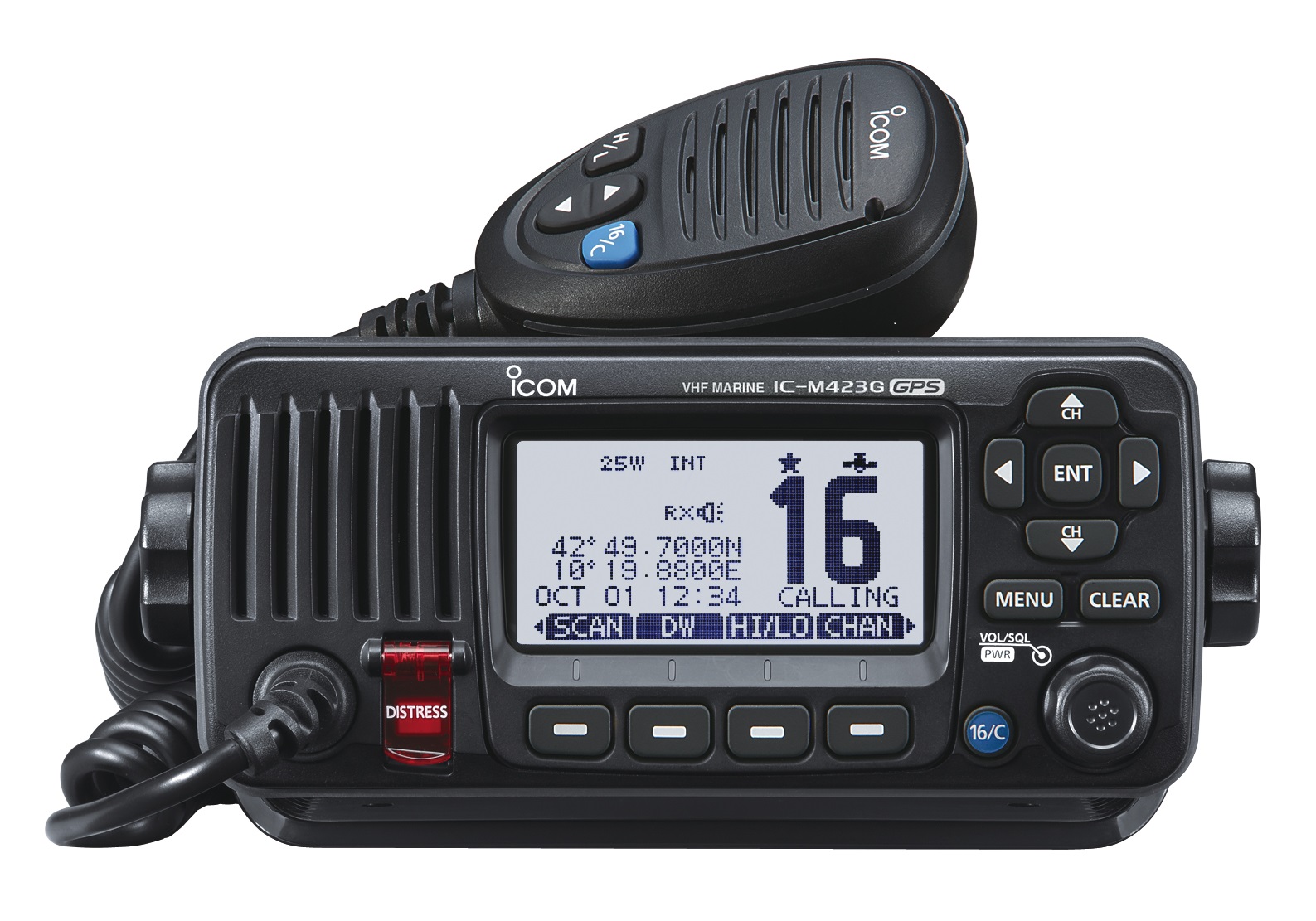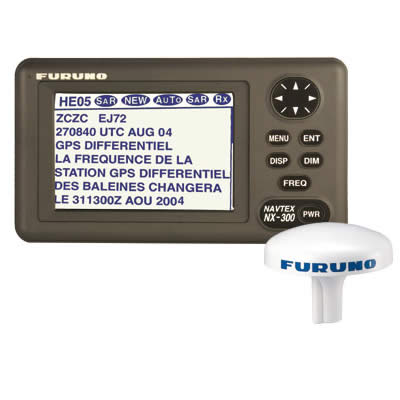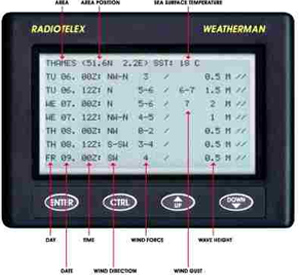About this page
A summary of sources of marine weather forecasts broadcast on the Global Maritime Distress and Safety System (GMDSS) as well as being made available by public service radio, Internet, email and on demand.
For quick links to GMDSS schedules, texts of forecasts, weather charts, GRIB file sources, see
Introduction
Long gone are the days when we had only the shipping forecast on BBC Long wave radio or its foreign equivalents. We now have a bewildering array of forecasts from various sources and by a number of different routes.
Broadly speaking, these are:
- Marine VHF/MF Radio
- NAVTEX, Inmarsat, Iridium
- HF/Single Sideband radio
- Public service radio
- Internet
- Marinas
- Media
These are described briefly on this page and followed by A list of useful resources, mainly on-line.
There is considerable overlap in that the same service can be obtained by more than one route with the Internet providing the widest range. Taking each in turn -
Marine VHF and/or MF
In all cases the forecasts are produced by the relevant National Weather Service (NWS). Forecasts are always, at least, for the next 24 hours and usually have an outlook. The period of outlook varies from country to country.
Being produced by forecasters who know the area and have the best data available, these should always be used. Some countries broadcast in English as well as their national language. When this is not the case, it is always worthwhile making the effort to learn enough of the terminology. Ease of use varies with the country; the French are particularly good, others eg the Spanish are less so.
Courtesy of iCom.
NAVTEX,Inmarsat-C and Iridium
NAVTEX is the principal method for dissemination of Marine Safety Information; it is a system for broadcasting text over radio. This requires a dedicated, fairly low cost, receiver eg NASA. Furuno, McMurdo .
On NAVTEX 518 kHz, MRCCs broadcast texts of forecasts for "Sea Areas" as used in such as the BBC Shipping forecast ("Bulletins au large" in French.) These forecasts are always in English and, again, produced by the NWS. They should cover 24 hours with a brief 24 hour outlook although not all countries conform. The UK, alone, produces extended range forecasts for 3 to 5 days ahead on this frequency. There are usually two forecasts a day.
NAVTEX 490 kHz is used for national purposes. Mostly, this is for national language versions of the 518 kHz broadcasts. An exception is the UK which broadcasts inshore forecasts and some coastal actual reports.
Inmarsat-C and Iridium are, in some senses, an open ocean version of NAVTEX. The areas used in the forecast may be considerably larger than on NAVTEX ("Bulletins au grand large" in French.) Reception is roughly betwee latitudes 65 deg N/S, the footpring of geostationary satellites.
Iridium also provides GMDSS MSI but from satellites in near-polar orbit, so covering polar regions. Speeds are higher then for Inmarsat-C. MailASail can provide expert advice on equipment and operation.
HF/Single Side-Band Radio
SSB radio is used in three ways.
- First there are voice broadcasts of forecasts. These will usually be the same texts as on NAVTEX or Inmarsat-C.
- Secondly, there are charts broadcast on Radiofacsimile by the German Weather service (DWD) or by the Royal Navy. These need a computer interfaced with the radio.
- Thirdly, there are forecasts in text on Radioteletype from the DWD. Some of these are inshore forecasts around Germany, some are sea area forecasts. The most useful service is of wind, sea state and sometimes weather at a few grid points from the German weather prediction model. These are for up to five days ahead.
To receive charts, the usual way is to connect the radio to a computer and use decoding software. For RTTY, again a computer and decoding software is required or a tablet with Black Cat software. Regrettably, neither the excellent NASA Weatherman nor its German (Mører) counterpart are now marketed. You may be able to obtain a second-hand set.
Public service radio on MW and LW.
Few will not be familiar with the BBC Shipping forecast on Radio 4. Other countries have similar broadcasts although as DAB use increases these services will get fewer. Further, BBC LW is under threat.
The Internet
This is an Aladdin's cave of weather information available over local networks or mobile services via WiFi, 3G, 4G and, ow 5G networks, satellite phone. It provides a back-up to forecasts broadcast on VHF, NAVTEX, Inmarsat-C, Iridium, HF/SSB radio.
For those with limited bandwidth, email can be used to receive plain language texts and synoptic charts in a compressed data form. This is particularly useful for use with satellite systems or anyone using email over HF/SSB radio.
The internet is now a valuable source of forecasts direct from weather prediction computers.
Marina notice boards
The value depends upon who has produced the forecast and the diligence of the marina staff in updating. Sometimes, forecasts are transcripts of VHF or NAVTEX broadcasts. Sometimes they are forecasts when there has been some human input eg the Met Office Inshore Waters forecast. In both cases these will have the virtues of those broadcasts. In some cases, they will be taken from forecasts produced entirely automatically. These should not be relied upon for warning purposes. Whatever the source, most important is to check the date/time of issue. It is not unknown for forecasts to be days old or even weeks old.
The Media
This is generally a last resort. Remember that morning newspapers go to bed the previous day, sometimes quite early. Forecasts, inevitably, will be old. TV and radio forecasts are more likely to be up to date but are often aimed at the general land based public. .
----
Return to Home Page



